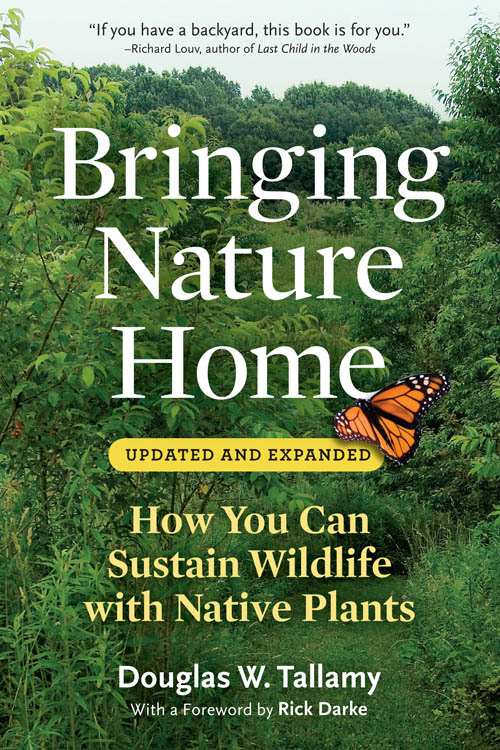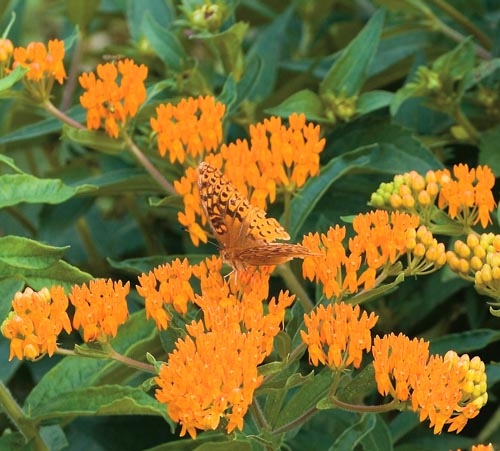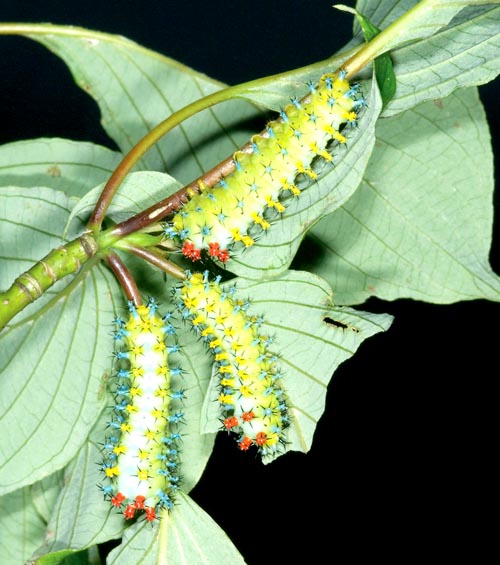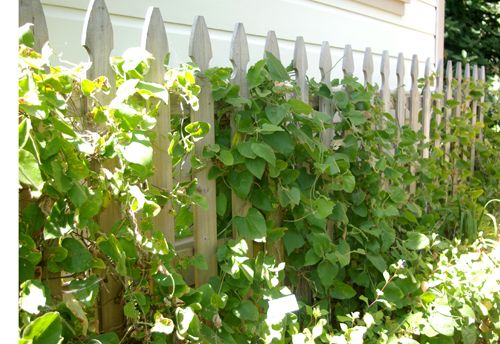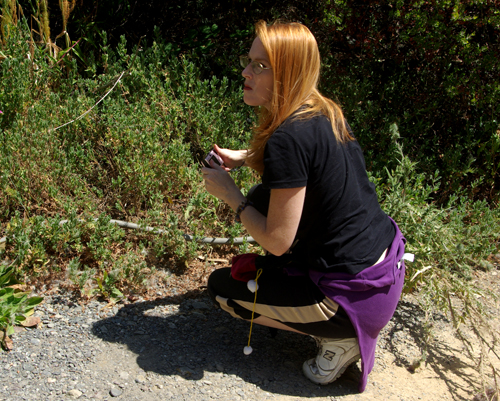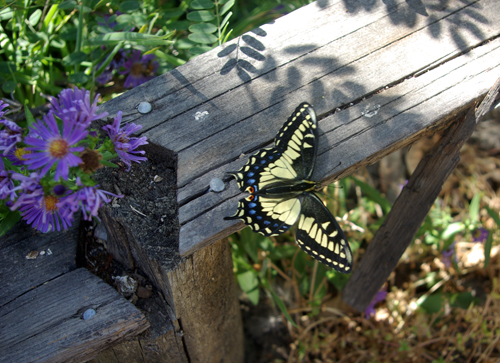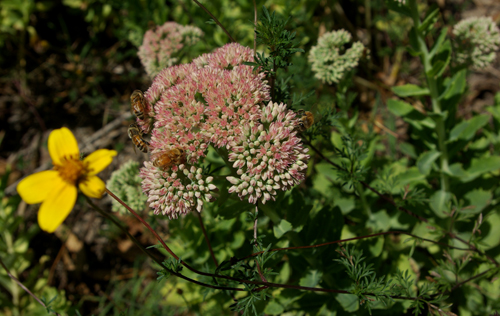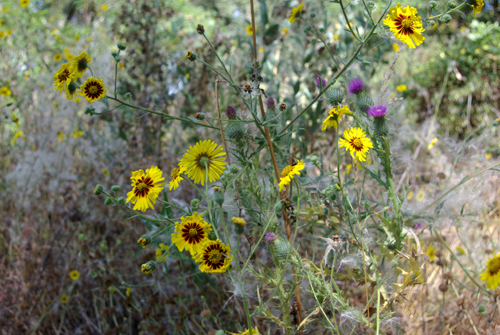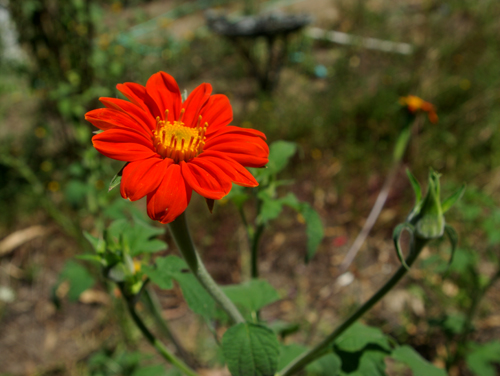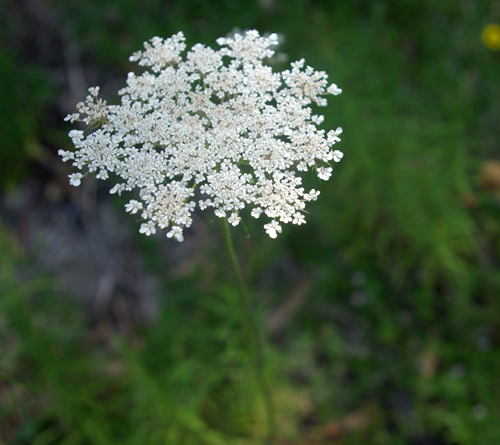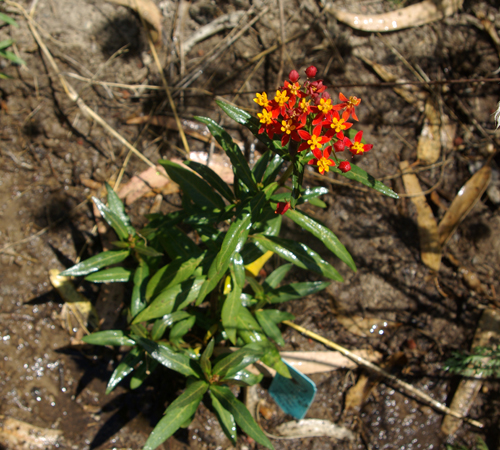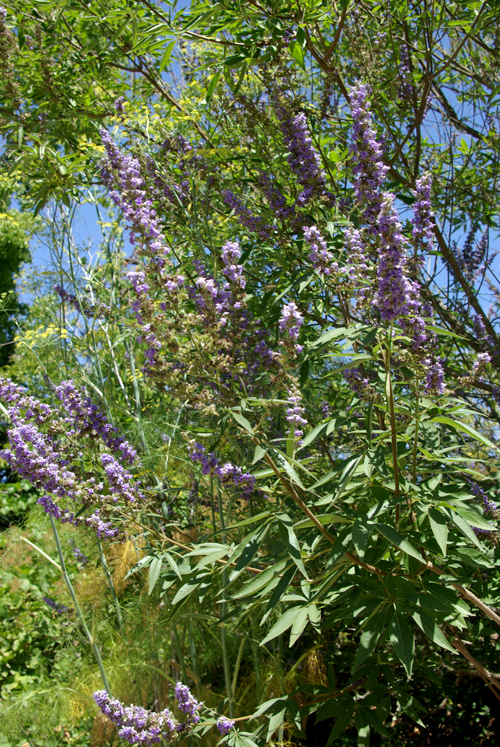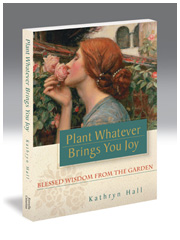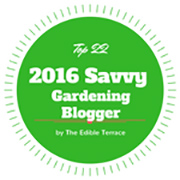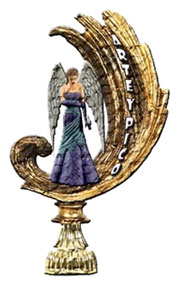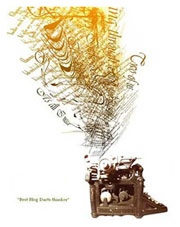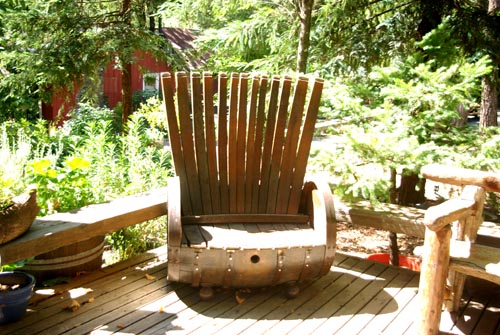
lovely wine barrel chair at Frey Winery
Take a seat, dear reader. We are off on a trip to Frey Vineyards, America’s first organic winery. I’d long told myself that a blogger living in wine country really ought to be posting now and again about vineyards and wineries. Right? So today is the day I’m inviting you to join me at a beautiful local winery. See? Vineyards.

vineyards at Frey Winery
However, as much as I appreciate the beauty of the many vineyards among which I live, true to my independent spirit it was actually the straw bale gardens that motivated this trip! Yes, indeed. And here is our travel guide, Marie, resident landscape gardener at Frey Vineyards, and a bright and shining and generous spirit. Lucky us.
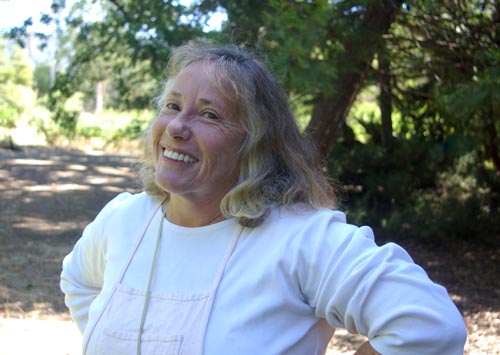
Marie, resident landscape gardener at Frey Vineyards
Adding to the fun is Puppy the poodle, one of the many dogs who live at Frey Vineyards, and who happily joins us in the adventure.
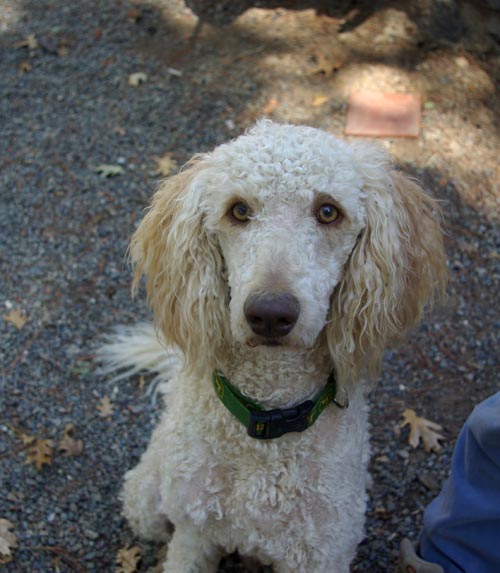
So here’s the skinny. It so happened that we attended a very large picnic which took place at Frey Vineyards over Labor Day, and I was totally enchanted with a number of things, particularly the straw bale gardens created by Marie. So I called and Katrina Frey kindly invited me to come out and gather information about this incredible way of gardening, which I fully intend to implement instead of the traditional raised beds I had been anticipating this winter. Hallelujah! So easy! You start here.
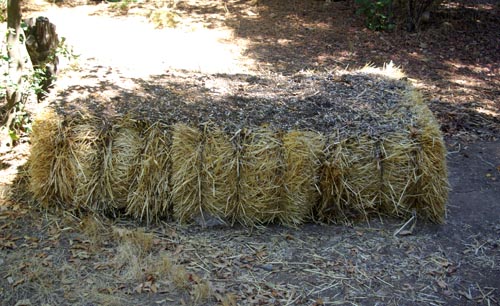
simple straw bale
Are you already getting the idea? I knew you would! Marie suggests that you put two bales side by side and pile two on top of each. Of course this is ideal from so many standpoints! One doesn’t have to stoop as much, so much easier on the back and knees. One need not really dig. The bunnies are less inclined to munch. The dogs won’t you know what in it. The list goes on. I think it’s fantastic! So here’s what you do. You punch a hole in it. And you stick some dirt in the hole. And then you put your seed or starter plant in the hole. Water. Done! Here’s Marie showing me how to make a hole with her gardening tool.
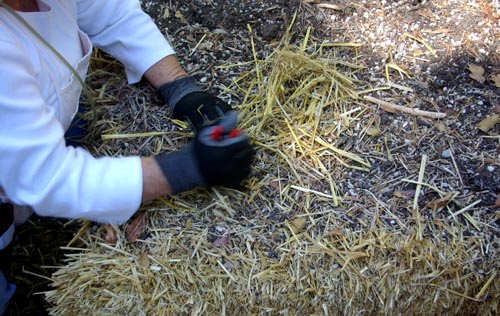
And here’s what you get!

lettuces, basil and lobelia happily growing in straw bale
Is that not incredible?? And here’s a broader view of the beds, so you really get this technique.
Now as if I needed even a teensy bit more convincing, this was the best part for me: the natural composting that occurs, as straw, miraculously, turns into this!
Is this not the richest soil you’ve seen outside of your compost bins? With none of the work! Stunning!
“People think they need to feed their plants. What they don’t realize is that they need to feed their soil and their soil will nurture their plants.” ~Marie, resident landscape gardener at Frey Vineyards
So, after a couple of years these straw bales break down into that delicious treasure in Marie’s hand, and you can use that as a basis for your expanding beds, or start over. What was truly amazing to me was when Marie told me that a local Waldorf school teacher built a vegetable garden on asphalt with her second graders using straw bales! Can you think of the possibilities? Or you could put them on a sturdy roof! Or you could suggest a straw bale garden at a local nursing home. Perhaps you have an aging family member who loved gardening and this would be the door. Or maybe someone (you?) were longing for a garden but you only have a driveway? I mean, really. This could fly.
Not quite ready to leave Frey Vineyards in spite of learning what I’d come to learn, I asked if we might go see their beehives, as I knew they had an unusual hive from Germany that some beekeepers were ooing and awwing over on Labor Day, and about which I’d read. Marie was graciously happy to oblige. Here’s what that looked like. I was careful to not stand anywhere near the front, blocking bees from their intentional comings and goings.
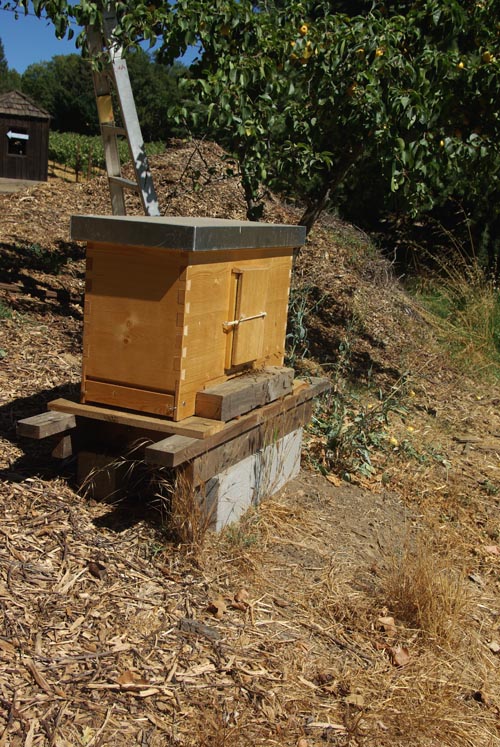
And here are some of the other more traditional hives, a short distance away.
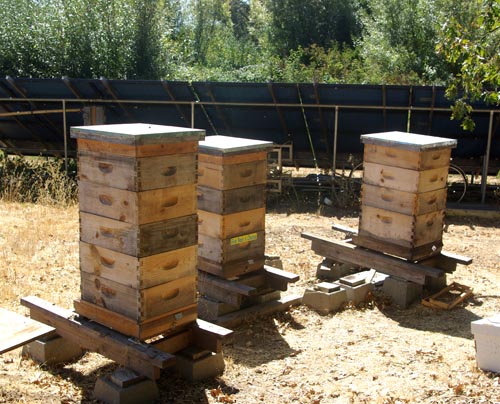
Marie kindly explained to me that they are raised up to the exact height that would put, oh, say, a raccoon’s face right in line with the front door (and flight path) of the bees. This would not be good for the raccoon, but handy for the bees. She says the dogs (and there are many on the property) never go near the hives. Good to know.
Ironically, as I was bidding farewell, Marie brought to my attention that, given that it’s harvest season, the winery workers are bottling today. Perhaps another day? Instead I turn my attention to the beauty of a very large perennial lobelia displaying her flowers in her final days. Today I’ll go with her.
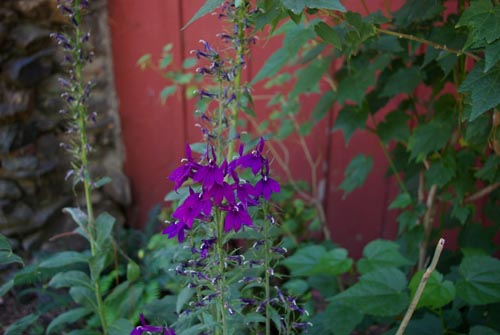
I am grateful for a lovely day.
Love and gardening blessings,
Kathryn xoxo
Posted on September 15th, 2009 by Kathryn
Filed under: Field Trips | 32 Comments »

